JOINING THE CIRCUS

Log PT, Hell Week.
U.S. Navy
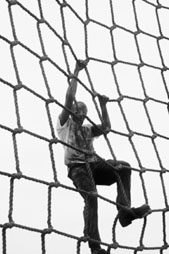
The O-course.
U.S. Navy
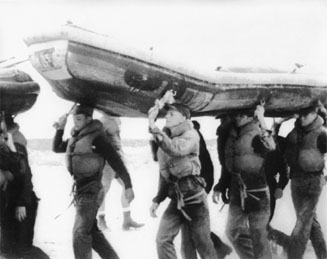
The only easy day was yesterday. Boat Crew Four, Hell Week, Class 114, May 1981. The author is under the middle of the boat, face in shadow.
Author’s collection
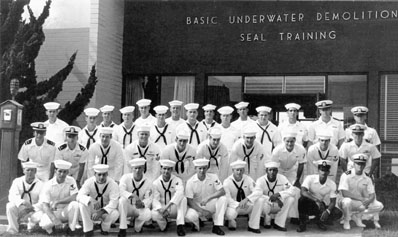
Bulletproof and invisible. Class 114’s graduation picture, September 1981. The author is in the last row, second from the right. Class 114 was one of the few classes to complete Hell Week without losing a single man. Twelve operators from this class would later go onto serve at SEAL Team Six.
U.S. Navy
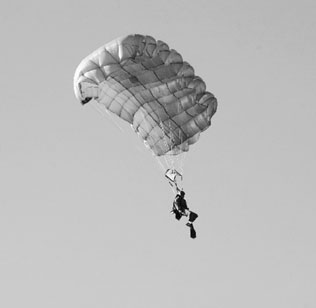
A SEAL operator prepares for a water landing using an MT-1-X parachute. His descent is going a lot smoother than my last jump.
U.S. Navy
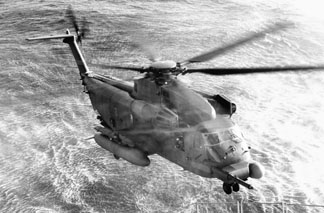
MH-53J Pave Low special operations helicopter.
U.S. Air Force
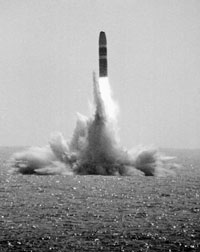
Trident C-4 missile is launched off the coast of Florida.
U.S. Navy
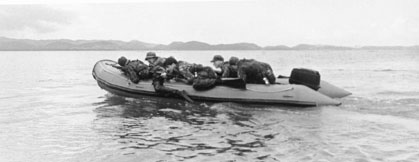
Combat rubber raiding craft insertion off Vieques Island, Puerto Rico. Dwight Light (in billed cap) and author (in jungle hat).
U.S. Navy
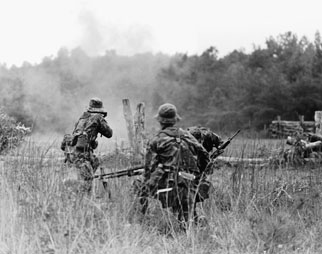
Fifth Platoon, SEAL Team Four conducts live fire exercises, Fort A. P. Hill, Virginia, November 1982. Point man lays down fire as his squad deploys. The smoke is from the detonation of a booby trap.
U.S. Navy
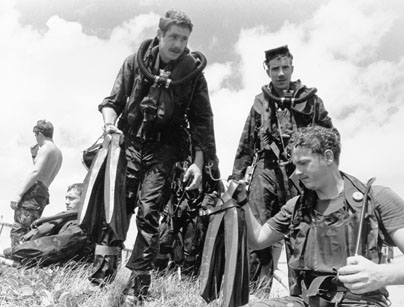
Combat-swimmer training, Isla Peros, Puerto Rico. Author (standing, carrying fins) and Frank Giffland (mask on head).
U.S. Navy
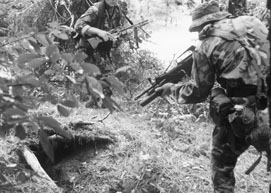
Woodland operations, predeployment training, Fort A. P. Hill, Virginia.
Operator in foreground carries an M-4 carbine, aka a “poodle shooter.” Rigged under the barrel is an M-203 grenade launcher. Operator in background carries an M-60 machine gun.
U.S. Navy
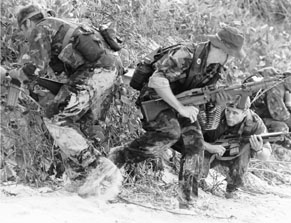
Counterambush training, Isla Peros, Puerto Rico. Bubba at left, Surfer Dave, right (crouching).
U.S. Navy
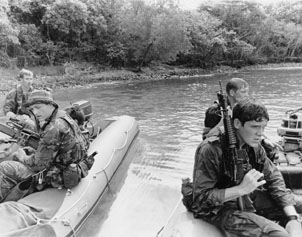
Dog tired after a week of night ops. Fifth Platoon’s operational readiness exam, Isla Peros, Puerto Rico. Left to right: Frank Giffland, Operator 570, Cheese, Scott.
U.S. Navy
PEACEKEEPER
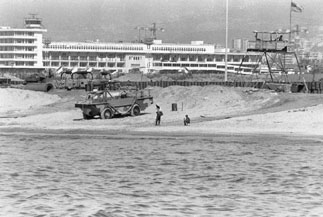
Green Beach, with Beirut International Airport in the background.
U.S. Navy

Green Beach, from seaward. Note the causeway sections and the fortifications on the hill.
U.S. Navy
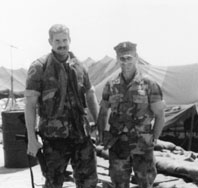
The author and Doc Jones at Green Beach, August 1983. Our world was about to get violent.
Scott Speroni
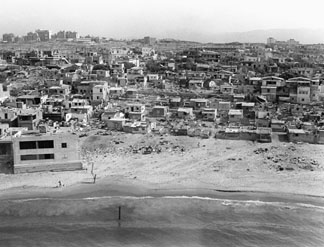
The Radical Riviera. West Beirut, the Italian sector. A wild no-man’s-land we called Khomeiniville.
U.S. Marine Corps
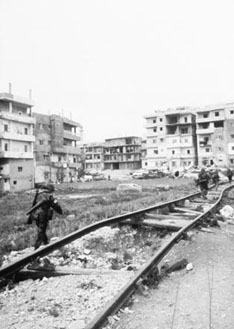
It’s a wonderful day in the neighborhood. Marine patrol enters the slum of Hay es Salam, north of Beirut International Airport. This part of town we called Hooterville.
U.S. Marine Corps

Martyr’s Square. The Green Line, downtown Beirut.
U.S. Marine Corps

French Foreign Legion barracks, Beirut. This building (at left) would be truck bombed on October 23.
U.S. Marine Corps
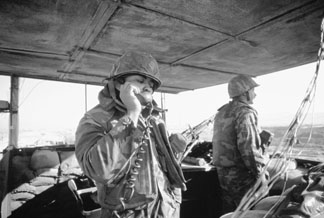
Inside the watchtower, Green Beach. In a matter of weeks, snipers would make the tower too dangerous to use.
U.S. Marine Corps
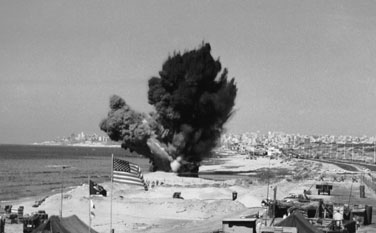
Explosion tears at right flank of Green Beach.
Scott Speroni
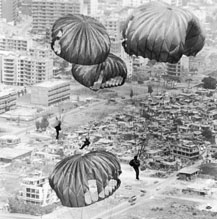
Fifth Platoon of SEAL Team Four and elements of the French Foreign Legion conduct parachute insertion into Beirut, July 1983. That’s Hooterville below.
Claude Salhani
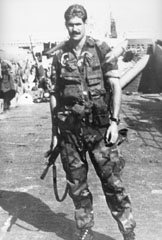
Bad Karma. The author, aboard an LCU of Assault Craft Unit 2, following a foot patrol of West Beirut.
Author’s collection
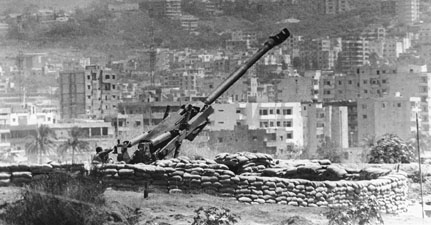
A 155-millimeter howitzer of Charlie Battery, 24 MAU, fires against Shiite gun positions in the Shouf Mountains.
Claude Salhani
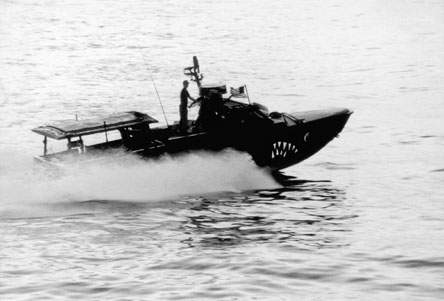
Seafox SWSC (Special Warfare Support Craft) off Beirut. Frequent repainting of the shark’s mouth led both Israelis and Lebanese to conclude that the U.S. had as many as four boats patrolling off the city. In actuality, the white enamel we used for the teeth kept flaking off the Seafox’s carbon fiber hull. Every time we repainted the teeth, the mouth came out differently.
Frank Giffland
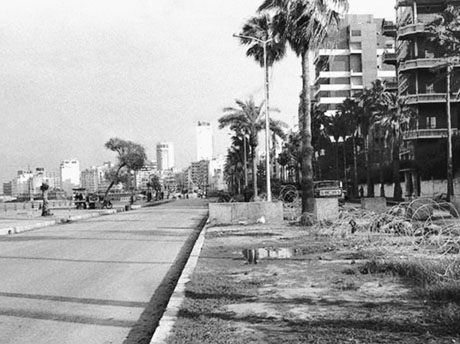
The corniche, Beirut, 1983. Looking east from the Duraford building.
U.S. Marine Corps
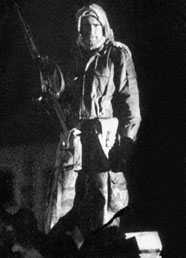
The author in militia costume.
Author’s collection
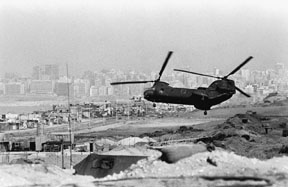
A marine CH-46 helicopter departs the pattern from LZ Brown at Beirut International. This low-level flying was made necessary by the amount of RPG and small arms fire coming out of Hooterville.
U.S. Marine Corps
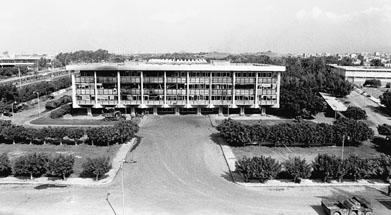
The battalion landing team headquarters, Beirut International Airport. The truck bomb that would destroy the building smashed through a security gate and drove straight up the main drive and into the building.
U.S. Marine Corps
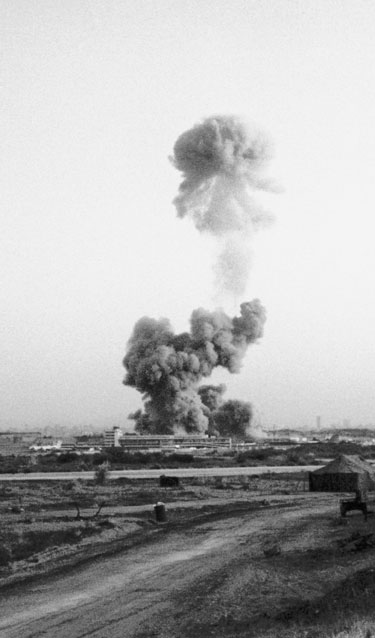
On October 23, 1983, at 0623 hours, one of the largest non-nuclear explosions in the history of warfare destroyed the battalion landing team headquarters at Beirut International Airport. To gauge the size of the explosion, note the airport’s control tower and a pair of Boeing 707 jetliners in the foreground. This photograph was taken seconds after the blast, from the marine positions at the north end of the runway. The photographer was nearly a mile from ground zero.
U.S. Marine Corps
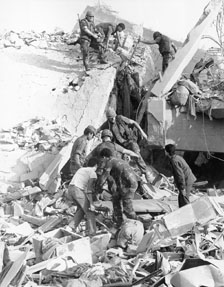
Moments after the blast, marines begin the search for survivors. For the next two days, snipers from Hooterville would pour fire on rescuers and victims alike.
U.S. Marine Corps
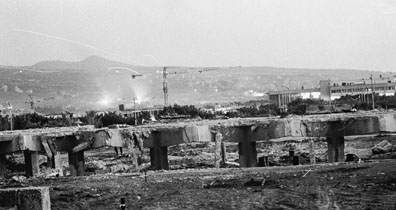
Firefight in the Ash Shuafat. In the foreground is the wreckage of the battalion landing team headquarters.
U.S. Navy

Leaving Beirut.
U.S. Marine Corps
A RAKE’S PROGRESS

SEAL Team Four rigger straddles the deck of an underway nuclear submarine.
U.S. Navy
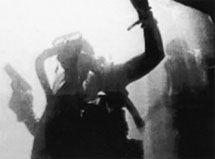
SEAL swim pair approaches a surface target. Note absence of bubbles. Diving rigs are Draeger LAR-V oxygen rebreathers.
U.S. Navy

Gearing up for a water drop off the coast of Honduras. Rudi (right) and Uncle Chuck trying to look fierce.
Scott Speroni
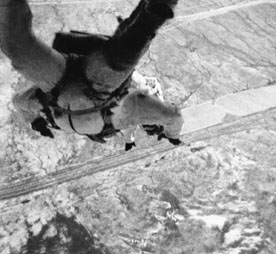
The author exits an aircraft 30,000 feet above the Sonoran desert. That’s Interstate 10 way down there.
Author’s collection

SEALs conduct VBSS (visit, board, search, and seize) exercise against the U.S.S. Austin. Their equipment is typical kit for shipboard CQB. Helicopters are from HCS-2 Redwolf Squadron.
U.S. Navy
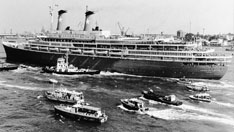
The cruise ship Achille Lauro.
Associated Press

Night-vision equipment photographs a SEAL operator conducting shipboard CQB. Note the MP-5 and the night-vision monocle attached to his helmet.
U.S. Navy
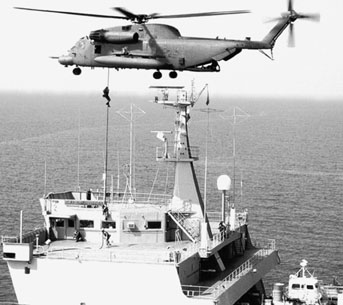
SEALs arrive aboard M/V Cape Mohican during a ship takedown exercise.
U.S. Navy